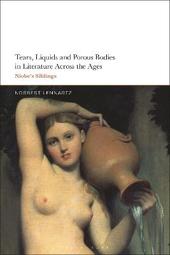
|
Tears, Liquids and Porous Bodies in Literature Across the Ages: Niobe's Siblings
Paperback / softback
Main Details
| Title |
Tears, Liquids and Porous Bodies in Literature Across the Ages: Niobe's Siblings
|
| Authors and Contributors |
By (author) Norbert Lennartz
|
| Physical Properties |
| Format:Paperback / softback | | Pages:280 | | Dimensions(mm): Height 234,Width 156 |
|
| Category/Genre | Literature - history and criticism
Literary studies - c 1500 to c 1800
Literary studies - c 1800 to c 1900 |
|---|
| ISBN/Barcode |
9781350187115
|
| Classifications | Dewey:820.93561 |
|---|
| Audience | | Tertiary Education (US: College) | |
|---|
| Illustrations |
8 bw illus
|
|
Publishing Details |
| Publisher |
Bloomsbury Publishing PLC
|
| Imprint |
Bloomsbury Academic
|
| Publication Date |
23 March 2023 |
| Publication Country |
United Kingdom
|
Description
Taking in works from writers as diverse as William Shakespeare, William Wordsworth, Charlotte Bronte, John Keats, James Joyce and D.H. Lawrence, this book spans approximately 300 years and unpacks how bodily liquidity, porosity and petrification recur as a pattern and underlie the chequered history of the body and genders in literature. Lennartz examines the precarious relationship between porosity and its opposite - closure, containment and stoniness - and explores literary history as a meandering narrative in which 'female' porosity and 'manly' stoniness clash, showing how different societies and epochs respond to and engage with bodily porosity. This book considers the ways that this relationship is constantly renegotiated and where effusive and 'feminine' genres, such as 'sloppy' letters and streams of consciousness, are pitted against stony and astringent forms of masculinity, like epitaphs, sonnets and the Bildungsroman.
Author Biography
Norbert Lennartz is Professor of English Literature at the University of Vechta, Germany. He has published widely on Romanticism, in particular on Byron, and on the paragons of the Victorian Age (Dickens, Hardy, Wilde).
ReviewsLennartz provides a fascinating, hyper-focused close re-reading of a host of canonical texts spanning roughly three hundred years ... [The book] pays unflinching attention to the liquid grotesque in the canon and provides an explicit treatment of the body and its leakiness without resorting to 'metaphorical fig leaves' or the stony limitations of chronology. * Literature & History *
|